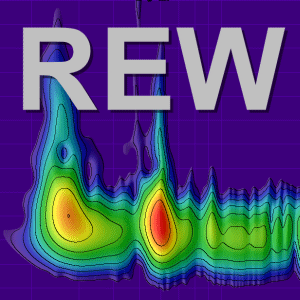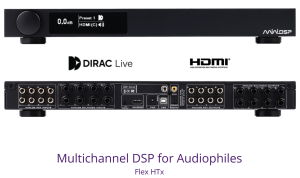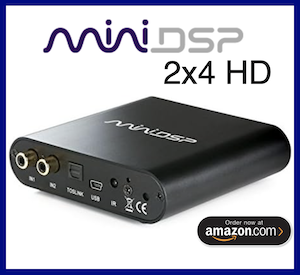robbnj
Member
Thread Starter
- Joined
- Oct 24, 2022
- Posts
- 31
More
- Preamp, Processor or Receiver
- Denon
- Main Amp
- B&O icePower
- DAC
- Denon
- Computer Audio
- JRiver
I posted this in the REW thread in another forum I belong to, and thought I would also share here since it involves direct use of REW.
Please remove if the share isn't appropriate or allowed.
So my UMIK-1 arrived and I had a few minutes to play while wife was away.
As promised, I did a comparison of the UMIK against the other mics I already had (and had compared against each other with surprising results).
It was far from "scientific, but I tried to make the test accurate and consistent as possible (at least enought o tell me what I wanted to know)
I tested each mic four times in a row. At the beginning of each test I confirmed the signal was coming from that particular mic, and on the 4th test I wrapped it in six layers of bath towel to make sure it was still where the signal was coming from. In other words, each response definitely came from the mic I was testing.
All were mounted on a tripod, 36" from the floor, pointed at the ceiling. They were arranged on a tripod in a line about 3" across, parallel to the front wall, as the apex of an equilateral triangle.
I calibrated REW using a calibrated RadioShack SPL meter.
The list of "competitors": UMIK-1 ($80); Dayton Audio IMM6 ($30); Audyssey "Eiffel Tower" ($40); 15+ year old Panasonic mic element from Digikey (probably $2.00 or less when purchased).
No calibration files were entered. This is just raw recording. 0-20KHz sweep.
My takeaway (just my personal evaluations and feelings; don't get angry if your results vary): These microphones are far more similar in what they pick up from my system than I ever expected or would have imagined. In my opinion that's a good thing because CONSISTENCY. But It also bums me out a bit because PRICE. I'd almost wonder if they aren't all the same capsule model in different clothing, they are THAT close. Let's put it this way: If you applied these as an EQ curve to your system and compared all four, I would be very surprised if you could tell them apart by listening.
For ME, I would have no problem using the cheapest of them to calibrate a system, once I dialed in a calibration curve for it, or saving that, I would have no problem using the cheapest calibrated one, which is the Dayton IMM6. I had read several complaints that the Dayton was lacking in it's ability to accurately pick up low frequencies. If that's the case, then it seems the Audyssey and the UMIK have a similar deficiency.
I will admit that the calibration file for the UMIK has data points than the IMM6, but I have to wonder how much that can matter when we are talking frequency responses seen in speakers in an average home setting.
And yes, the response curves are with Audyssey engaged. They're a mess, and are similarly messy when I used my IMM6 with the cal file loaded. I thought Audyssey shined in its handling of bass, but the graph is not all that different with or without Audyssey. I guess I have some troubleshooting to do.
Maybe a MiniDSP will be in my stocking next month...


Please remove if the share isn't appropriate or allowed.
So my UMIK-1 arrived and I had a few minutes to play while wife was away.
As promised, I did a comparison of the UMIK against the other mics I already had (and had compared against each other with surprising results).
It was far from "scientific, but I tried to make the test accurate and consistent as possible (at least enought o tell me what I wanted to know)
I tested each mic four times in a row. At the beginning of each test I confirmed the signal was coming from that particular mic, and on the 4th test I wrapped it in six layers of bath towel to make sure it was still where the signal was coming from. In other words, each response definitely came from the mic I was testing.
All were mounted on a tripod, 36" from the floor, pointed at the ceiling. They were arranged on a tripod in a line about 3" across, parallel to the front wall, as the apex of an equilateral triangle.
I calibrated REW using a calibrated RadioShack SPL meter.
The list of "competitors": UMIK-1 ($80); Dayton Audio IMM6 ($30); Audyssey "Eiffel Tower" ($40); 15+ year old Panasonic mic element from Digikey (probably $2.00 or less when purchased).
No calibration files were entered. This is just raw recording. 0-20KHz sweep.
My takeaway (just my personal evaluations and feelings; don't get angry if your results vary): These microphones are far more similar in what they pick up from my system than I ever expected or would have imagined. In my opinion that's a good thing because CONSISTENCY. But It also bums me out a bit because PRICE. I'd almost wonder if they aren't all the same capsule model in different clothing, they are THAT close. Let's put it this way: If you applied these as an EQ curve to your system and compared all four, I would be very surprised if you could tell them apart by listening.
For ME, I would have no problem using the cheapest of them to calibrate a system, once I dialed in a calibration curve for it, or saving that, I would have no problem using the cheapest calibrated one, which is the Dayton IMM6. I had read several complaints that the Dayton was lacking in it's ability to accurately pick up low frequencies. If that's the case, then it seems the Audyssey and the UMIK have a similar deficiency.
I will admit that the calibration file for the UMIK has data points than the IMM6, but I have to wonder how much that can matter when we are talking frequency responses seen in speakers in an average home setting.
And yes, the response curves are with Audyssey engaged. They're a mess, and are similarly messy when I used my IMM6 with the cal file loaded. I thought Audyssey shined in its handling of bass, but the graph is not all that different with or without Audyssey. I guess I have some troubleshooting to do.
Maybe a MiniDSP will be in my stocking next month...












